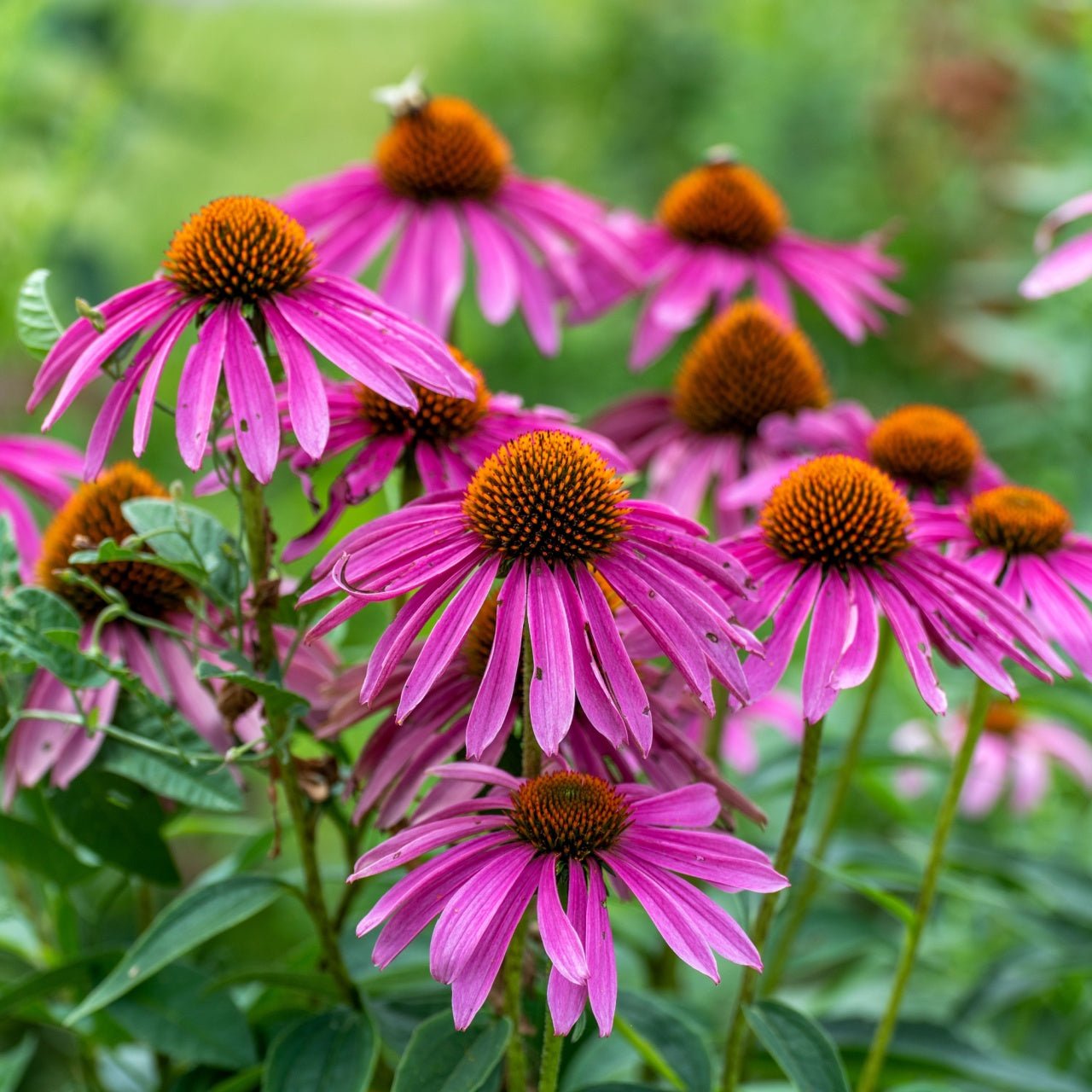What month do you plant Echinacea?
Echinacea, commonly known as coneflowers, are best planted in the spring or early fall. For gardeners, timing is pivotal when introducing these perennial beauties. With its warming soil and frequent rainfall, spring provides an optimal window for planting Echinacea. The plants have the whole growing season to grow their roots before facing the rigors of winter. Early fall is also an excellent time to plant Echinacea for regions with mild winters. The cooler temperatures and occasional autumn rains encourage strong root development, setting the stage for a robust display of blooms the following summer.
One of the reasons gardeners so widely love Echinacea is their adaptability. These resilient plants don't demand excessive pampering or precise timing like some more delicate species. If planted in late spring, they still manage to thrive. However, waiting until summer or planting them too late in fall can put them at risk of not settling in properly before the first frost.
Echinacea seeds also provide an option for gardeners seeking to grow these plants from scratch. Starting seeds indoors in late winter can be a rewarding experience. Transplanting the seedlings into the garden when the weather warms is a surefire way to ensure their survival. The flexibility in planting times makes Echinacea a go-to option for novice and seasoned gardeners.
Does Echinacea come back every year?
Yes, Echinacea are perennial plants, meaning they return year after year, reliably bringing life and color to your garden with minimal effort. Once established, Echinacea require little maintenance and can survive in various conditions, making them a long-term investment for any garden space. Their resilience stems from deep-rooted adaptability, thriving in challenging and favorable environments. In their first year, Echinacea plants focus primarily on establishing their root systems so that gardeners may notice fewer blooms. But by the second and third years, the plants come into their own, producing vibrant flowers and creating a more substantial presence in the garden.
Over time, Echinacea not only returns but often multiplies. Gardeners who leave the seed heads intact over the winter can expect natural reseeding. The plants can also expand through their root systems, slowly increasing their footprint in the garden. This natural spreading can lead to beautiful Echinacea clumps requiring little intervention. Echinacea can be divided every few years for those who want even more plants, allowing gardeners to extend their coneflower displays to other parts of the yard or share them with fellow enthusiasts.
Part of what makes Echinacea so beloved is its ability to return each year with vigor. They bloom reliably and become more established, producing more flowers and attracting pollinators such as bees and butterflies. For gardeners seeking a plant that provides a perennial return on investment, Echinacea fits the bill perfectly.
Do Echinacea flowers like sun or shade?
Echinacea thrives in full sun, but it can tolerate some partial shade. Ideally, it prefers six to eight hours of direct sunlight per day. Sunlight is essential for Echinacea to produce its signature vibrant blooms. Planted in the right conditions, these plants will reward gardeners with a long-lasting display of flowers that often persists from midsummer into fall. The better sunlight they acquire, the more prolific their blooming will be.

That said, Echinacea are adaptable plants, and if partial shade is available, they can still perform, albeit with fewer blooms and a potentially leggier appearance. Shade, especially in the afternoon, can be beneficial in scorching climates where the sun's intensity might cause some stress. A place with morning sun and spotty afternoon shade works well.
Experimenting with Echinacea in lighter, filtered shade for gardeners with shady spaces can sometimes yield pleasant surprises. Though not ideal, these plants are tenacious and might still provide a handful of blooms even in less-than-ideal light conditions. However, ample sun is the key to the fullest, most robust flowering.
Where is the best place to plant Echinacea?
The best place to plant Echinacea is in well-drained soil, under total sun exposure. These prairie natives are used to thriving in open, sunny spaces where they can soak up as much light as possible. Whether you are working with garden beds, borders, or meadows, Echinacea will flourish as long as the area has good drainage. Waterlogged soil can spell trouble for these plants, leading to root rot and other issues. For gardeners with heavy clay soils, it is advisable to amend the dirt with organic matter to improve drainage before planting.
Raised beds or slopes can also provide an ideal planting environment, helping water drain away from the roots. Once established, Echinacea are drought-tolerant and don't require constant watering or attention, making them perfect for low-maintenance gardens. Whether planted as a focal point or intermixed with other perennials, their tall stems and striking cone-shaped flowers create a dynamic visual appeal.
Planting Echinacea near pollinator-friendly plants like lavender, bee balm, or salvia can enhance the overall appeal of the garden. These companions attract bees and butterflies, which naturally gravitate toward Echinacea's open blooms, increasing pollination and creating a lively, buzzing garden ecosystem.
For wildlife-friendly gardens, leave the spent flower heads standing in the fall. The dried seed heads provide food for birds, especially goldfinches, through the winter months. This small act of leaving Echinacea in place can turn your garden into a year-round haven for both plants and wildlife.
Echinacea's ability to adapt and thrive makes them a true asset to any garden. Whether your space is large or small, sunny or slightly shaded, they can bring beauty, resilience, and ecological benefits to your planting efforts.





